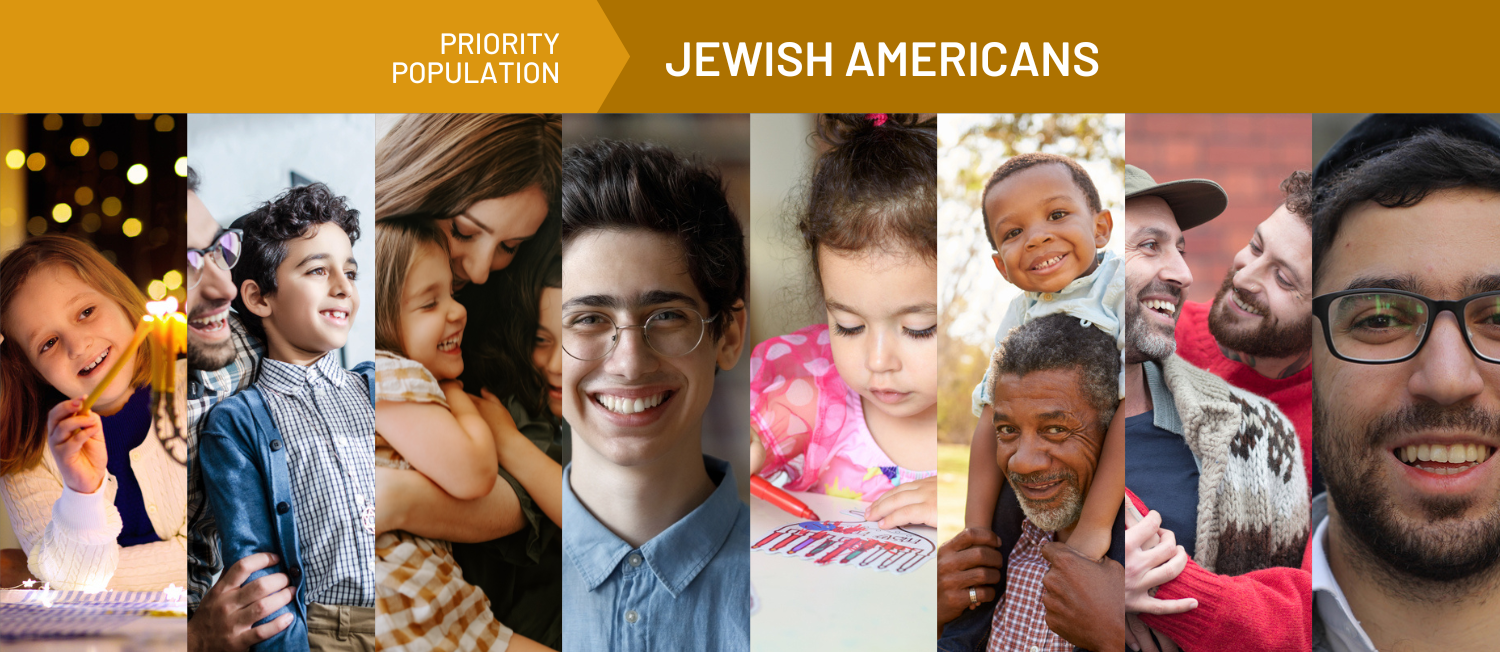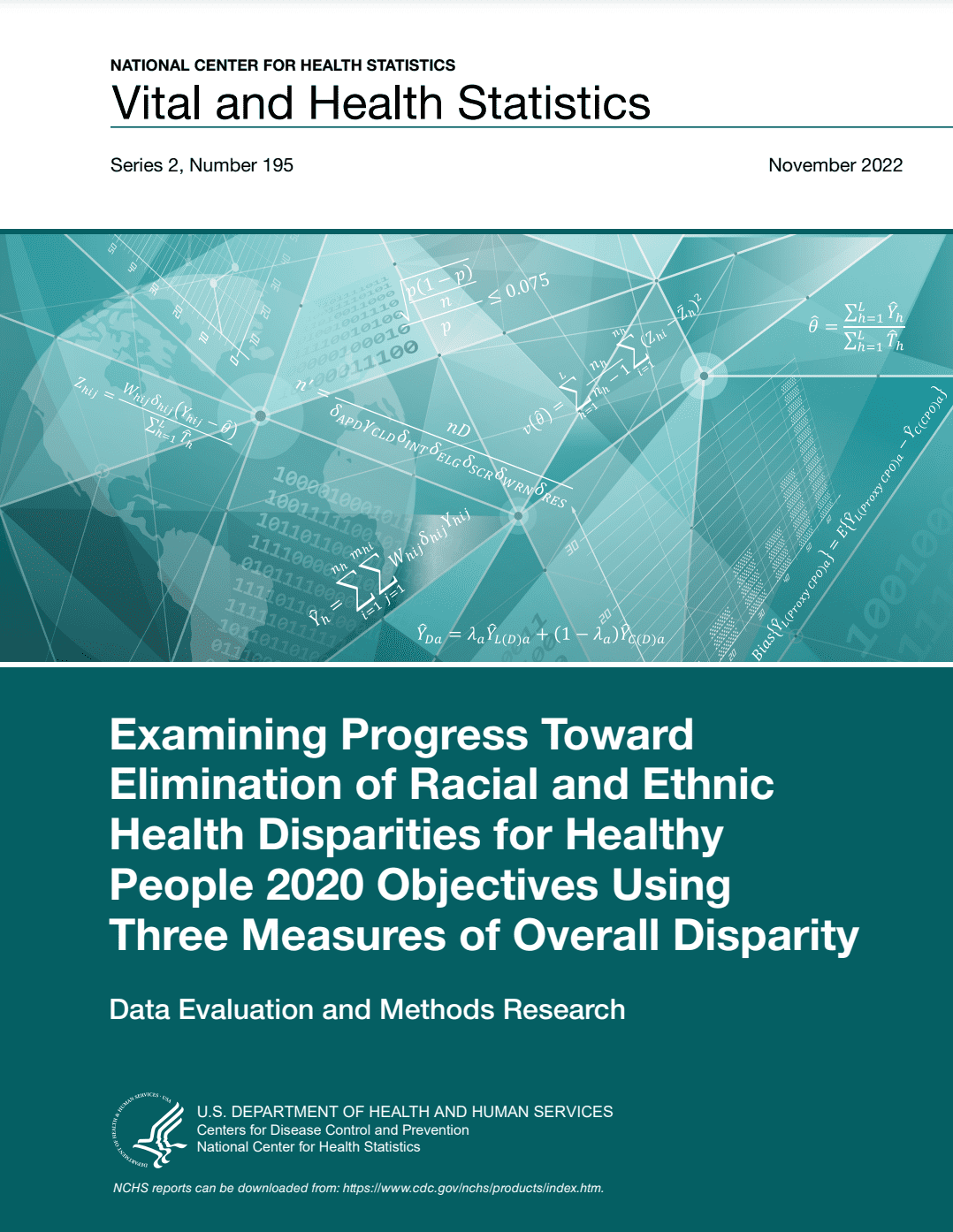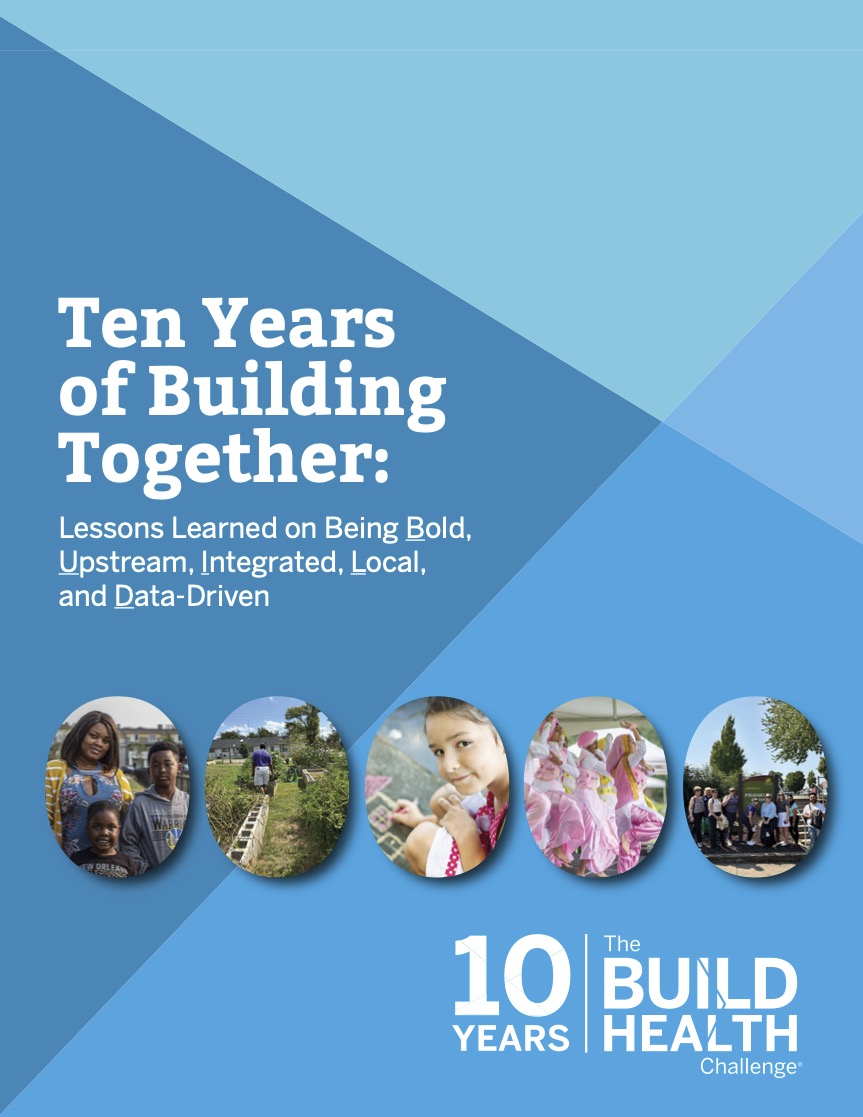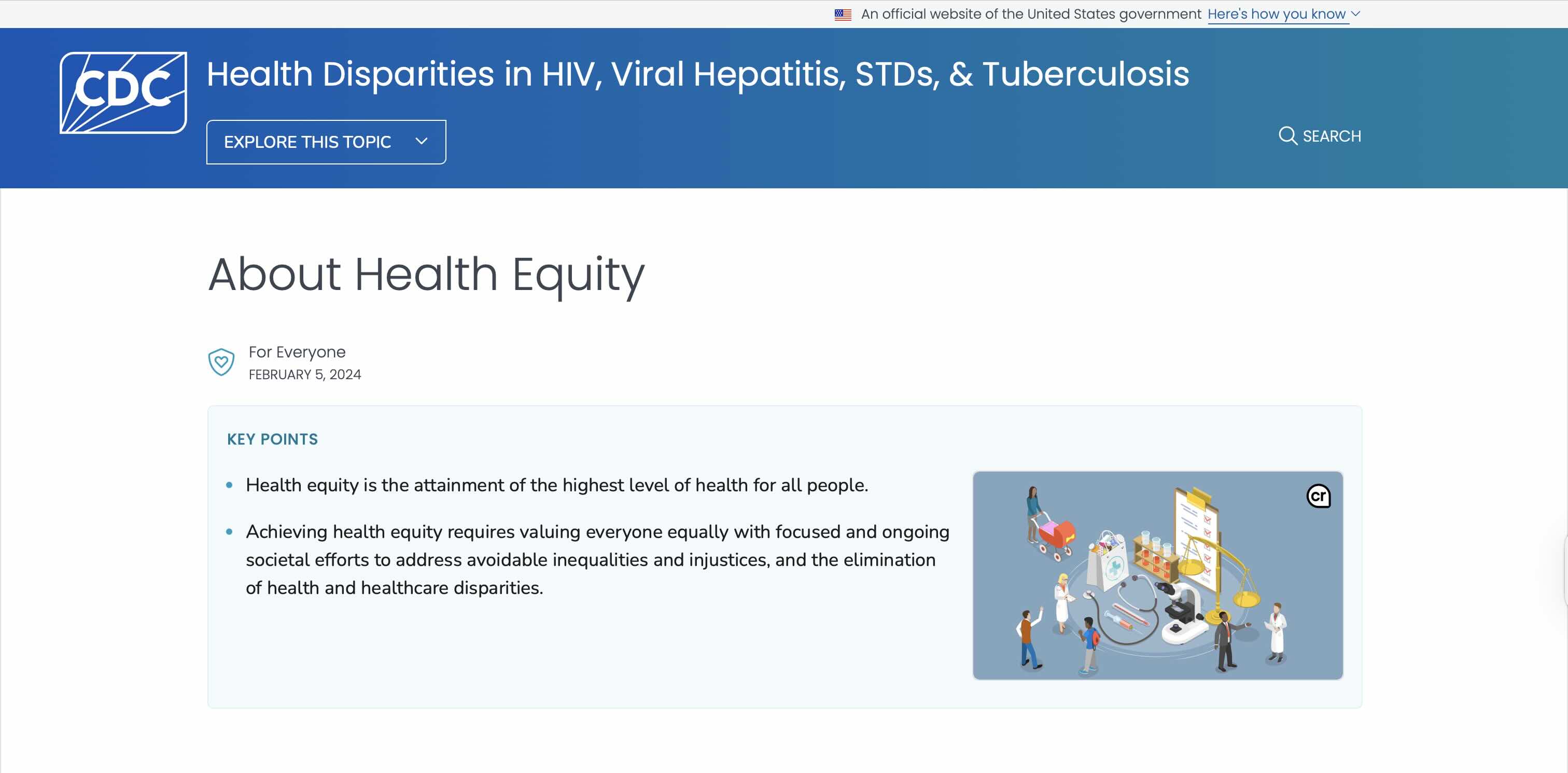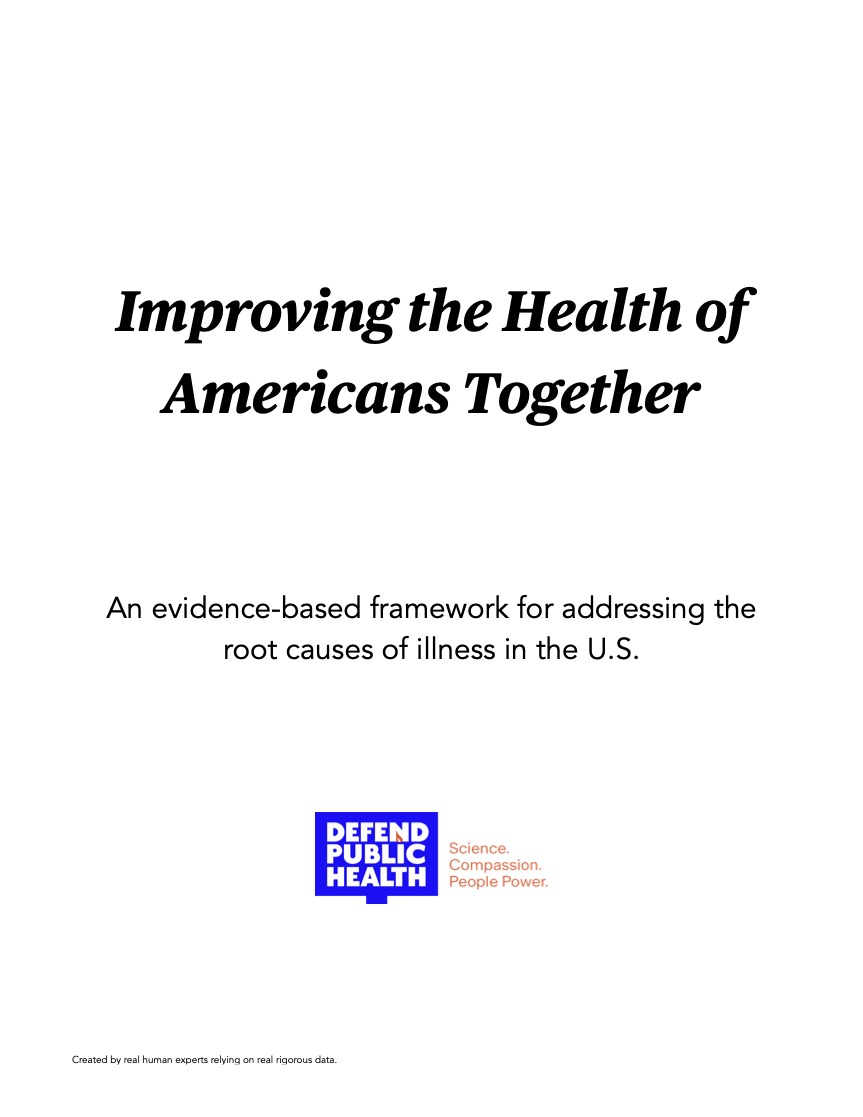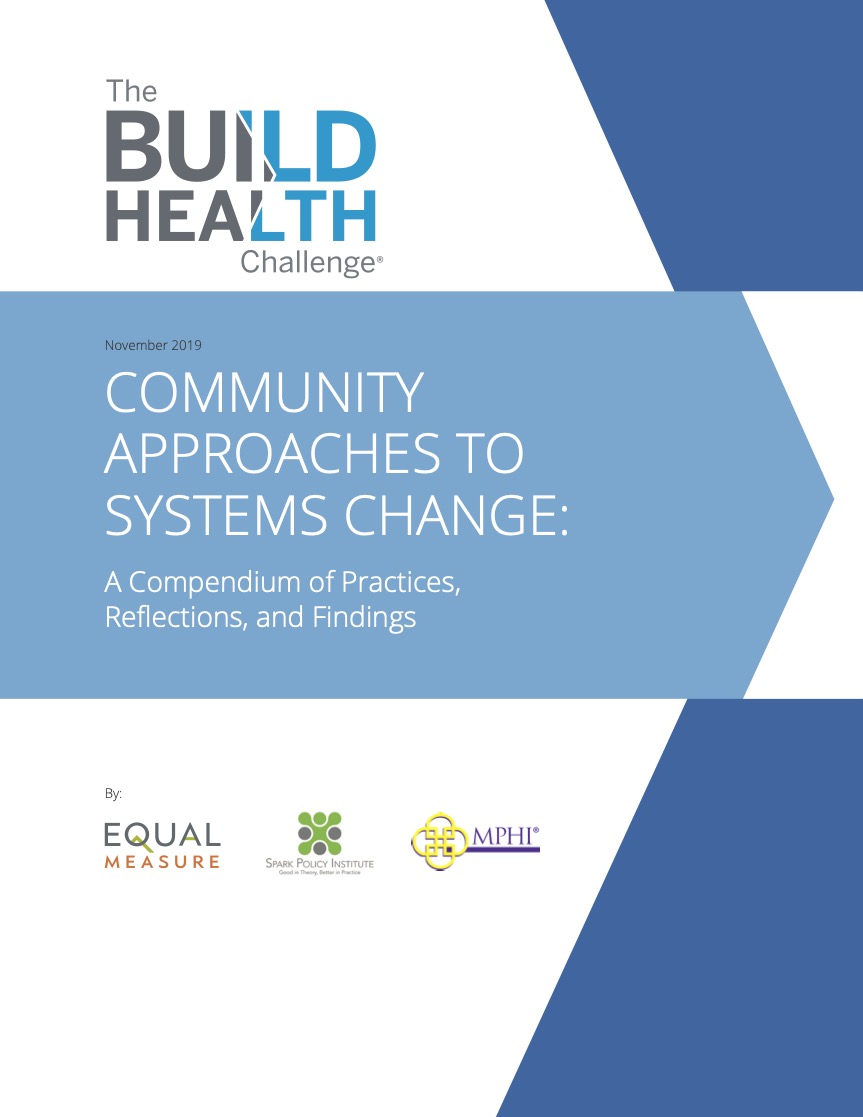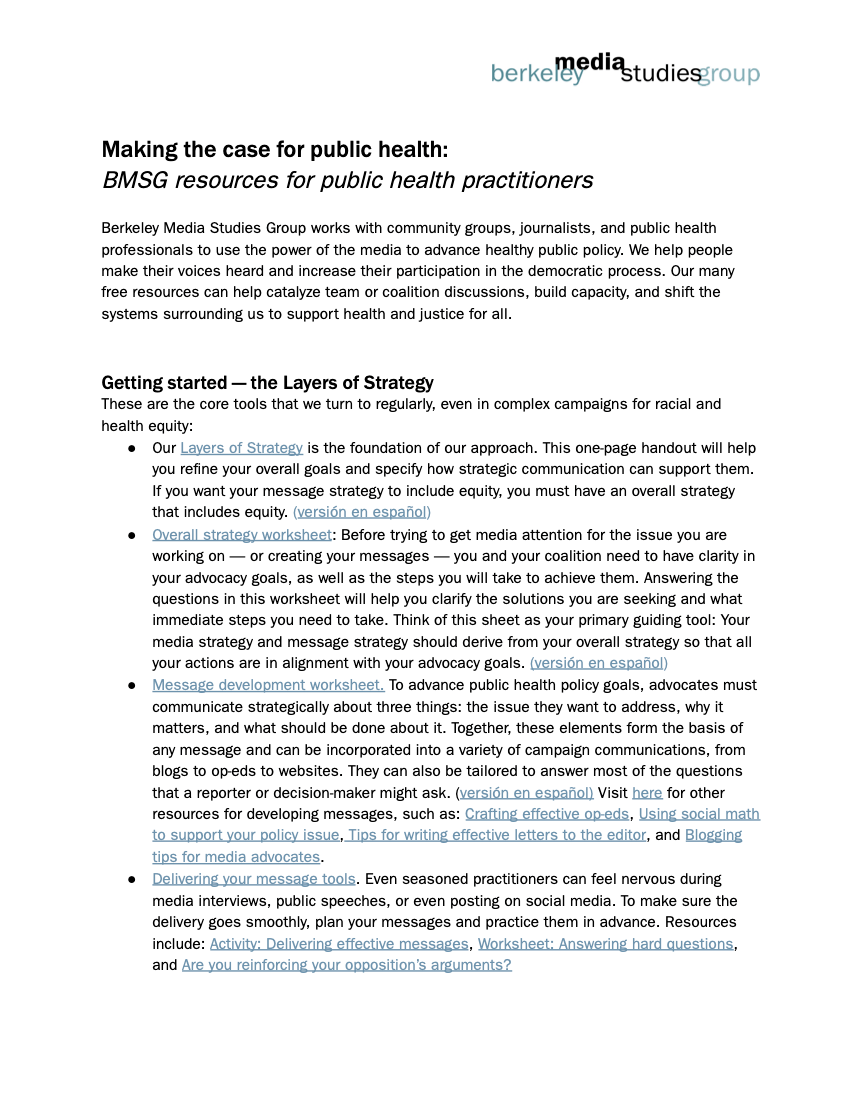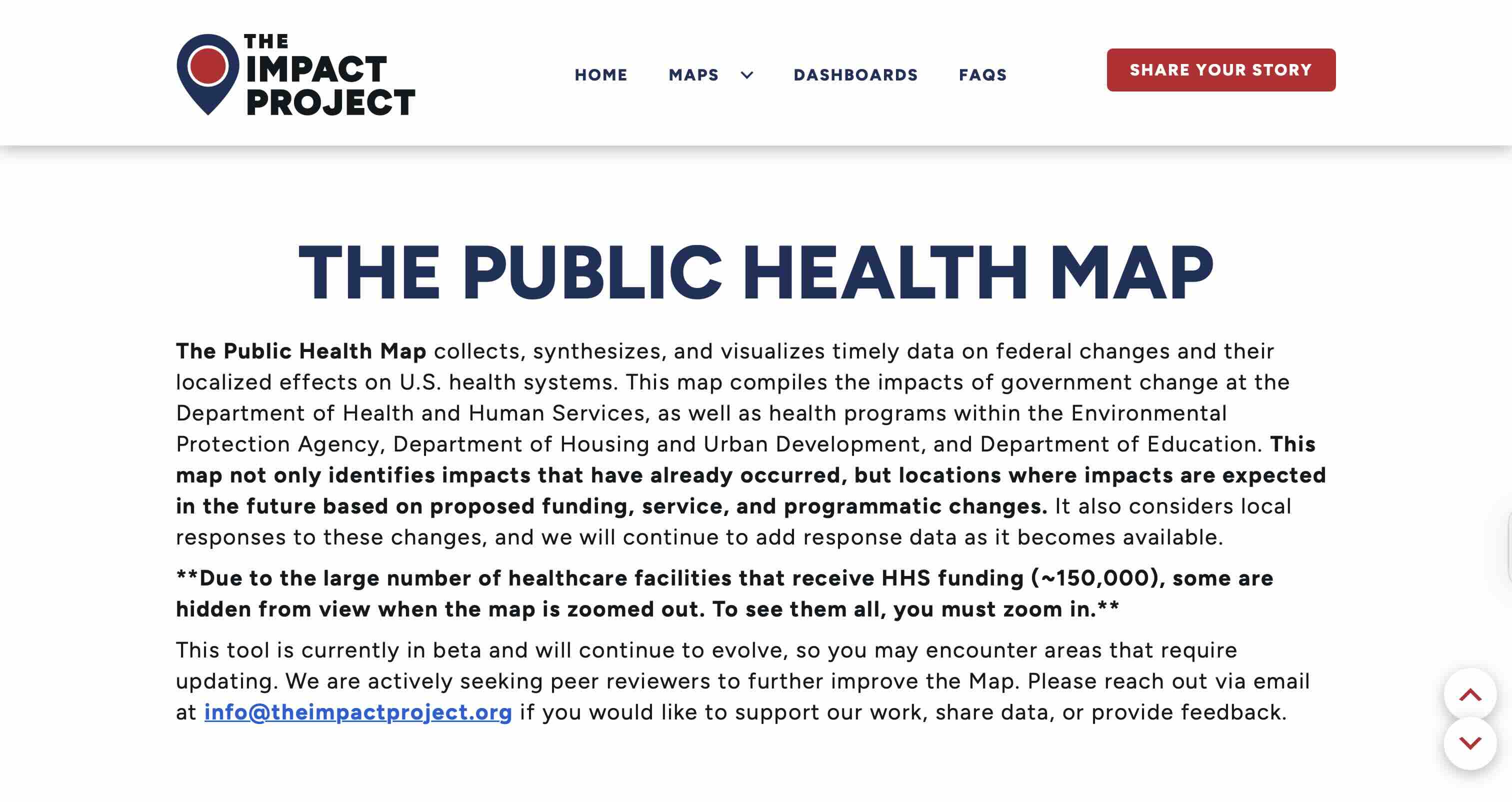Health Equity
Health equity means that every person has an equal opportunity to be healthy and well. Opportunities to be healthy and well are often assessed by examining the Seven Vital Conditions, or the Social Determinants of Health (e.g. humane housing, meaningful work and wealth). While achieving health equity is intuitively imperative and a goal of many organizations and change-makers working to advance equitable well-being, it’s also a common challenge. This is because inequities are created when barriers exist that prevent individuals and communities from reaching their full potential to be healthy and well, and there are many such barriers in communities across the Nation. Examples of barriers to well-being include poverty, discrimination, and racism, all of which can have consequences like lack of affordable housing, and lack of access to good-paying jobs or high-quality, culturally appropriate health care. To achieve health equity, we must not only decrease barriers, but also remove the societal circumstances that are a result of these barriers. To be clear, decreasing poverty is positive, but if those in poverty still lack access to health care, we have not achieved health equity.
One of the most difficult things about working toward health equity is that in many cases barriers to well-being exist because of conditions that have persisted in the U.S. for years, if not decades. It’s challenging to reverse these long-standing conditions due to their pervasive nature and the way they are deeply embedded in society. For example, racism in the U.S. is systemic and has historically prevented people of color from having the same opportunities as their white counterparts for economic, physical, and mental health. Without health equity, vulnerable populations are at risk for disparate access to community resources and conditions that create well-being because of economic, cultural, racial, or physical characteristics. Importantly, improved overall population health is not necessarily a sign of increased health equity. Health equity is demonstrated through a decrease in health disparities—worse health outcomes in marginalized groups.
While overall health in the U.S. has improved significantly in the last century (the life expectancy today is drastically improved as compared to 100 years ago), health disparities persist. We see evidence of this even in the recent progression of the COVID-19 pandemic, where people of color are disproportionately represented among coronavirus cases.
Achieving increased health equity will require engagement with people in historically marginalized communities that have experienced barriers to well-being, many of whom are advocating for themselves in unprecedented and impactful ways. It will also require allyship and commitment and work from stewards across systems and sectors to decrease barriers to conditions that lead to well-being. Adoption of a well-being framework like the Vital Conditions for Well-Being acknowledges the interconnectedness of our physical health to the community conditions in which we live, and the corresponding disparities in these conditions because of a lack of health equity. Additionally, as we consider use of data and measurement to track progress toward health equity, “a commitment to health equity requires constant monitoring not only of overall (average) levels of health and the resources [conditions] needed for health in a whole population, but also routinely comparing how more and less advantaged groups within that population are faring.”
Featured Resources
Resources & Tools
Aligning Systems with Communities to Advance Equity through Shared Measurement: Guiding Principles
Resource - Guide/handbook
Brought to you by American Institutes for Research in the Behavioral Sciences
Thriving Together: A Springboard for Equitable Recovery and Resilience in Communities Across America
Resource - Report
Brought to you by Well Being Trust
Diversity Data Kids
Resource - Website/webpage
Brought to you by Institute for Child, Youth and Family Policy
Examining Progress Toward Elimination of Racial and Ethnic Health Disparities for Healthy People 2020 Objectives Using Three Measures of Overall Disparity
Resource - Report
Brought to you by CDC National Center for Health Statistics
Recognizing and Dismantling Raciolinguistic Hierarchies in Latinx Health
Resource - Journal Article
Brought to you by AMA
Achieving Racial and Ethnic Equity in U.S. Health Care: A Scorecard of State Performance
Resource - Report
Brought to you by The Commonwealth Fund
Racial Justice and Health Equity: Public Perspectives on Reparations in America
Resource
Brought to you by AAMC
Innovative Laws and Policies for a Post-Pandemic Public Health System
Resource - Report
Brought to you by Network for Public Health Law
Artificial Intelligence/Machine Learning Consortiumto Advance Health Equity and Researcher Diversity
Resource - Website/webpage
A Population Health Impact Pyramid for Health Care
Resource - Journal Article
Brought to you by Milbank Memorial Fund
Beyond Health Care: The Role of Social Determinants in Promoting Health and Health Equity
Resource - Policy Brief
Brought to you by KFF
How to Advance Equity Through Health Impact Assessments
Resource
Brought to you by Society of Practitioners of Health Impact Assessment
Published on 11/01/2016
Leveraging Community Expertise to Advance Health Equity
Resource - Report
Brought to you by Urban Institute
Health Equity Guiding Principles for Inclusive Communication
Resource - Guide/handbook
Brought to you by CDC
Principles for Using Public Health Data To Drive Equity
Resource - Report
Brought to you by CDC Foundation
Harnessing Administrative Data to Study Health Inequality
Resource - Journal Article
Brought to you by The Lancet
Policing Is Killing Black Disabled People. Centering Intersectionality Is Critical to Reducing Harm.
Resource - Blog
Brought to you by Urban Institute
Understanding the Upstream Social Determinants of Health
Resource
Brought to you by RAND Corporation
Educating for Indigenous Health Equity: An International Consensus Statement
Resource - Journal Article
Racial Discrimination Associated With Higher Diastolic Blood Pressure in a Sample of American Indian Adults
Resource - Journal Article
Life Expectancy by County, Race, and Ethnicity in the USA, 2000–19: A Systematic Analysis of Health Disparities
Resource - Journal Article
Brought to you by Elsevier, Inc.
Long-Range Planning for Health, Equity & Prosperity: A Primer for Local Governments
Resource - Guide/handbook
Brought to you by ChangeLab Solutions
We Are All Public Health: How Public Health Systems Can Support Community Resiliency
Resource - Case Study
Brought to you by PHI
The Power of Narrative: Bringing People Together To Advance Equity With Jonathan Heller
Resource - Blog
Brought to you by Healthy Places by Design
Stress and Cardiometabolic Disease Risk for Indigenous Populations throughout the Lifespan
Resource - Journal Article
Creating Virtual Resources to Amplify Public Health Equity
Resource - Blog
Brought to you by Community Commons
Contagious Conversations: A CDC Foundation Podcast
Resource - Podcast
Brought to you by CDC Foundation
Data Democratization: The Unsung Hero of Health Equity
Resource - Blog
Brought to you by Health Leads
Growth and Equity: Analyzing Impacts on Displacement and Opportunity Related to Seattle’s Growth Strategy
Resource - Assessment
Published on 05/01/2016
Reimagining Rural Health Equity: Understanding Disparities and Orienting Policy, Practice, and Research in Rural America
Resource - Journal Article
Brought to you by Health Affairs
More Than the Sum: Networks, Public Will, and Scaling After The BUILD Health Challenge
Resource - Report
Brought to you by BUILD Health Challenge
Supporting Equitable Community Engagement
Resource - Guide/handbook
Brought to you by ChangeLab Solutions
Relationship Between Social Determinants of Health and Systolic Blood Pressure in United States Immigrants
Resource - Journal Article
A Recipe for Meaningful Community Engagement
Resource - Guide/handbook
Brought to you by Health Leads
Social Determinants of Health and Response to Disease Associated With Health Outcomes of American Indian and Alaska Native Patients
Resource - Journal Article
Brought to you by JAMA
Rural LGBTQ+ Americans Face Health Disparities, but Communities Revealed Strengths
Resource - Blog
Brought to you by Health Affairs
Housing Affordability and Quality: A Community Driver of Health
Resource - Report
Brought to you by APHA
How To Counter Preemption Laws That Can Undermine Health Equity
Resource - Blog
Brought to you by RWJF
Enhancing Data Access to Improve American Indian and Alaska Native Health: A Framework for State and Local Public Health Officials
Resource - Policy Brief
Brought to you by Council of State and Territorial Epidemiologists
Police Brutality and Black Health: Setting the Agenda for Public Health Scholars
Resource
Brought to you by NLM
ReThink Health Toolbox Webinars: Introduction to Shared Stewardship
Resource - Webinar
Brought to you by The Rippel Foundation
Introducing Health Equity Analysis Into State Review of Most Proposed Health Facility Changes
Resource - Blog
Brought to you by Milbank Memorial Fund
Health Equity Policy Platform for COVID-19 Response and Recovery
Resource - Website/webpage
Brought to you by HIP
LGBTQ-Inclusive Data Collection: A Lifesaving Imperative
Resource - Report
Brought to you by Human Rights Campaign
To Advance a National Health and Equity Infrastructure, Measure Drivers of Health
Resource - Blog
Brought to you by Health Affairs
Block, Bridge, and Build: A Framework to Forge a More Democratic Future
Resource - Blog
Brought to you by Nonprofit Quarterly
The First Community Health Center in Mississippi: Communities Empowering Themselves
Resource - Journal Article
Why Place Matters: Building a Movement for Healthy Communities
Resource - Report
Brought to you by PolicyLink
Healthy Equity Now: A Federal Policy Platform to Advance Public Health
Resource - Policy Brief
Brought to you by HIP
Increasing School Connectedness for Girls: Restorative Justice as a Health Equity Resource
Resource - Policy Brief
Pandemic Recovery Metrics to Drive Equity (PanREMEDY): Guidelines for State and Local Leaders in Anticipation of Future Catastrophic Outbreaks
Resource - Guide/handbook
Brought to you by Johns Hopkins Bloomberg School of Public Health
The Impact of Chronic Underfunding on America’s Public Health System: Trends, Risks, and Recommendations, 2022
Resource - Report
Brought to you by Trust for America's Health
Housing Solutions for Health Equity
Resource
Brought to you by University of Michigan School of Public Health
Community Approaches to Systems Change: A Compendium of Practices, Reflections, and Findings
Resource - Report
Brought to you by BUILD Health Challenge
In Common Newsletter: Hypertension, Race, and Ethnicity: Decreasing the Disparities
Resource
Published on 07/21/2022
Equitable Allocation of COVID-19 Vaccines in the United States
Resource - Journal Article
Brought to you by Springer
A Community-Centered Approach to Data Sharing and Policy Change: Lessons for Advancing Health Equity
Resource - Policy Brief
Brought to you by Center for Health Care Strategies
Transforming the Narrative: Health Equity and the Community – A Toolkit
Resource
Brought to you by NNPHI
Addressing Intellectual and Developmental Disabilities as a Health Equity Imperative: A Primer for Public Health Professionals
Resource
Brought to you by APHA
Population Care Management and Team-Based Approach To Reduce Racial Disparities Among African Americans/Blacks With Hypertension
Resource - Journal Article
Brought to you by Kaiser Permanente
Supporting Communities and Local Public Health Departments During COVID-19 and Beyond: A Roadmap for Equitable and Transformative Change
Resource - Report
Brought to you by PHI
Achieving Environmental Health Equity: The Need and Opportunities for Public Health Action
Resource - Policy Brief
Brought to you by APHA
Centering Equity in the Nation's Public Health System
Resource - Policy Brief
Brought to you by RWJF
Making the Case for Public Health: BMSG Resources for Public Health Practitioners
Resource - Data Bank/repository
Brought to you by BMSG
Police-Recorded Crime and Disparities in Obesity and Blood Pressure Status in Chicago
Resource - Journal Article
Brought to you by American Heart Association
On Racism: A New Standard For Publishing On Racial Health Inequities
Resource - Blog
Brought to you by Health Affairs
Published on 07/02/2020
Medical-Legal Partnership: A Powerful Tool for Public Health and Health Justice
Resource - Journal Article
Brought to you by ASPPH
The Link Between Structural Racism, High Blood Pressure, and Black People’s Health
Resource - Blog
Brought to you by American Heart Association
Moving Toward Equity: Equity Evaluation Toolkit
Resource - Guide/handbook
Brought to you by Health Policy Institute of Ohio
Water Insecurity and Population Health: Implications for Health Equity and Policy
Resource - Policy Brief
Brought to you by Health Affairs
Targeted Universalism Bibliography
Resource - Data Bank/repository
Brought to you by Othering and Belonging Institute
Health Equity Data Commitment and Principles
Resource - Website/webpage
Brought to you by Public Health Institute at Denver Health
Federal Evidence Agenda on LGBTQI+ Equity
Resource - Report
Brought to you by National Science and Technology Council
How Health Care Leaders Can Prioritize Health Equity for the LGBTQIA2+ Community
Resource - Blog
Brought to you by Harvard University
Reclaiming Indigenous Health in the US: Moving beyond the Social Determinants of Health
Resource - Journal Article
Examining Whether The Health-In-All-Policies Approach Promotes Health Equity
Resource - Case Study
Brought to you by Health Affairs
How Investing in Public Health Will Strengthen America’s Health
Resource - Report
Brought to you by Center for American Progress
Prevention Science and Health Equity: A Comprehensive Framework for Preventing Health Inequities and Disparities Associated with Race, Ethnicity, and Social Class
Resource - Journal Article
Brought to you by Springer
The Generational Impact Of Racism On Health: Voices From American Indian Communities
Resource - Journal Article
Brought to you by Health Affairs
Resource Guide: Operationalizing Anti-Racism, Social Justice, and Health Equity Principles through Performance Improvement
Resource - Guide/handbook
Brought to you by NNPHI
Addressing The Interlocking Impact Of Colonialism And Racism On Filipinx/a/o American Health Inequities
Resource - Journal Article
Racialization as a Barrier to Achieving Health Equity for Native Americans
Resource - Journal Article
Brought to you by AMA
Ethics Talk: Representation, Sovereignty, and Caring for Native American Patients
Story - Audio
Brought to you by AMA
Achieving Health Equity: Shared Stewardship and the Vital Conditions Framework
Story - Written
Brought to you by Nonprofit Quarterly
Published on 12/11/2023
Including Disability in All Health Equity Efforts: An Urgent Call to Action
Story - Written
Brought to you by The Lancet
Pandemic Highlights Deep-Rooted Problems in Indian Health Service
Story - Written
Brought to you by NYT
Published on 10/08/2021
Promoting Health Equity in Rural Communities
Story - Written
Brought to you by ChangeLab Solutions
Published on 12/13/2022
San Bernardino County Maternal, Child, and Adolescent Health (MCAH) Dashboard
Tool - Data/mapping Tool
Building Trust-Based Community Partnerships For Public Health Professionals
Tool - Workshop/training
Data & Metrics
Related Topics











